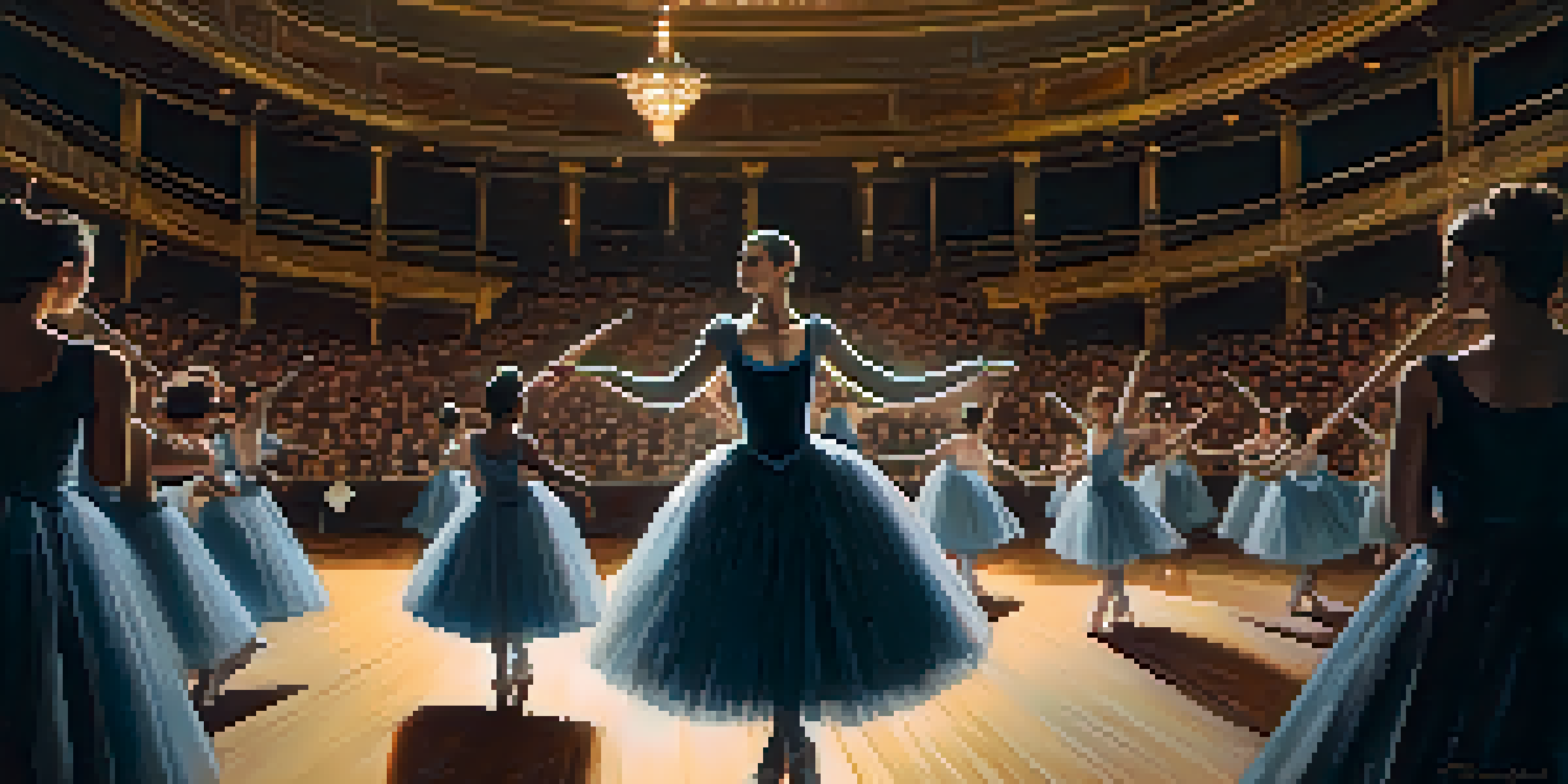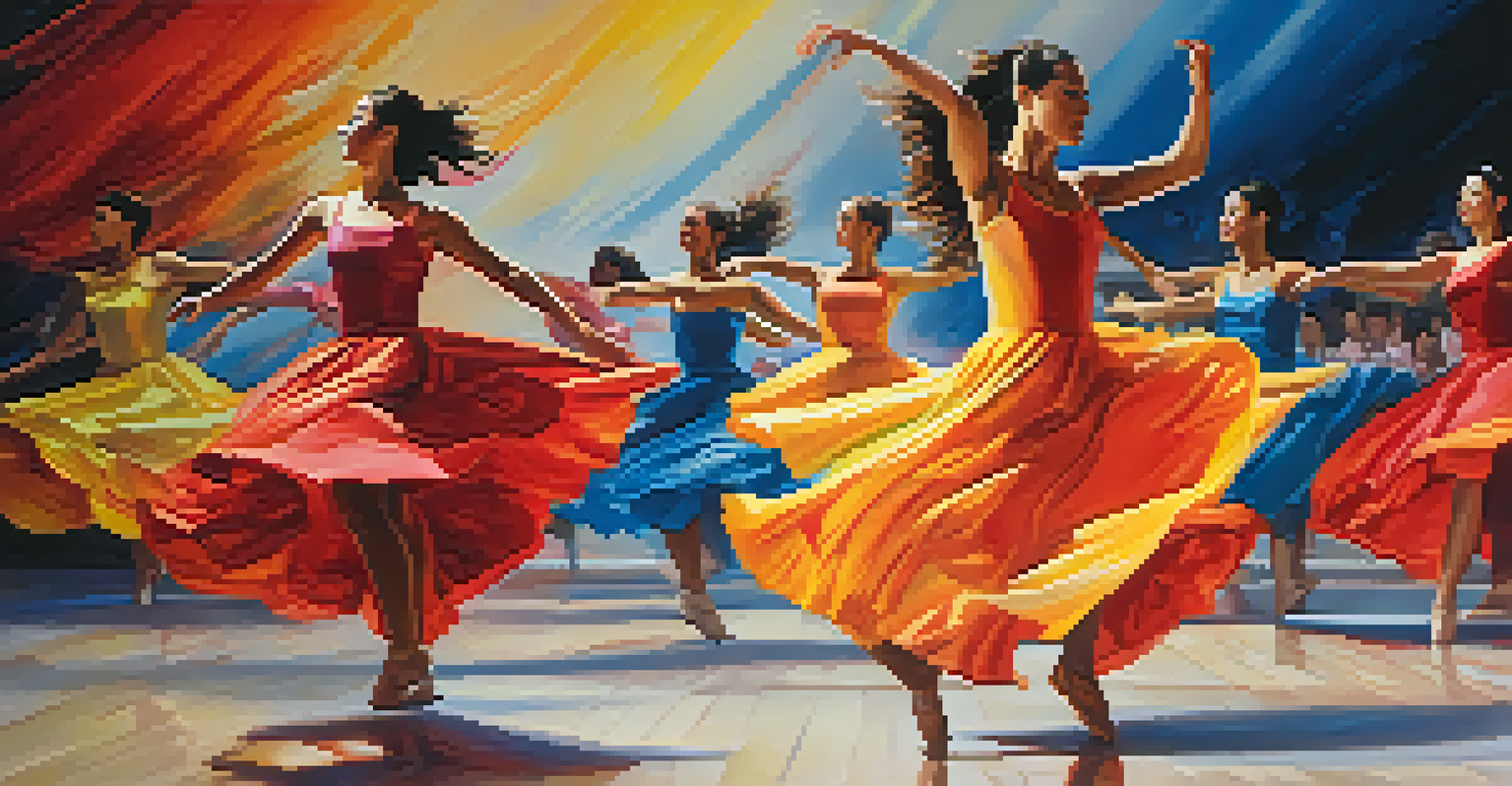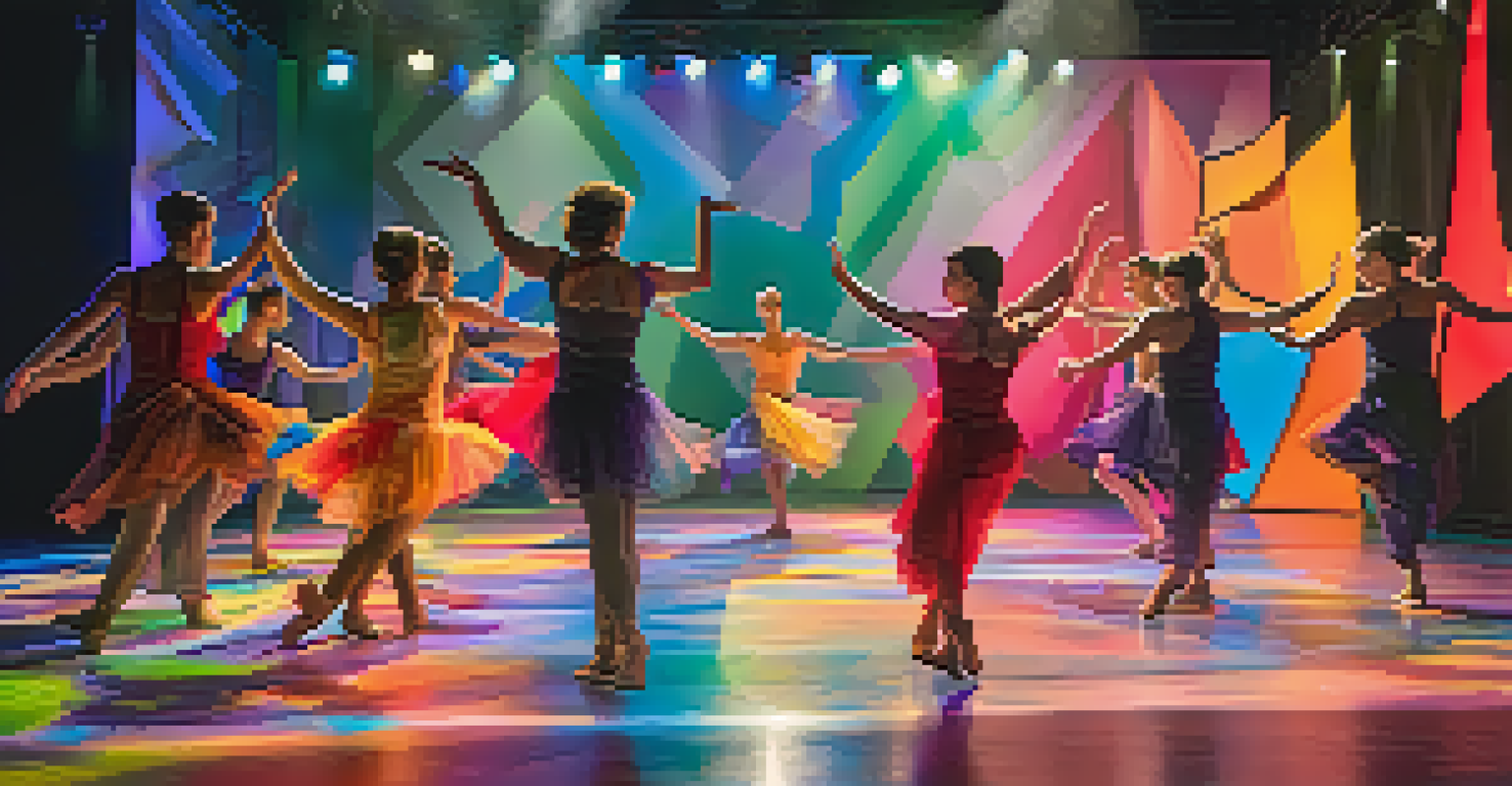Evaluating Dance Performances: Criteria Used by Critics

Understanding the Role of Dance Critics in Evaluations
Dance critics play a pivotal role in shaping public perception of performances. They not only provide feedback but also help audiences connect with the art form. By analyzing various aspects of a performance, critics guide viewers in understanding the nuances of dance.
Dance is the hidden language of the soul.
Their assessments often blend professional knowledge with personal opinions, making their insights valuable yet subjective. This duality is crucial as it reflects both the technical execution and the emotional resonance of a performance. Consequently, critics become intermediaries between the dance community and the public.
Ultimately, a dance critic's evaluation is not merely about judgment but about fostering appreciation for the art. Through their critiques, they help elevate the conversation surrounding dance, encouraging deeper engagement from audiences and artists alike.
Technical Skill: The Foundation of Dance Evaluation
One of the primary criteria critics assess is the technical skill demonstrated by dancers. This includes factors such as precision, strength, and control, which are essential for executing choreography effectively. A dancer's ability to perform complex movements without error often stands out in reviews.

Moreover, technical skill encompasses the understanding of various dance styles and techniques. Critics pay attention to how well dancers adapt to different forms, whether it's ballet, contemporary, or hip-hop. Mastery of these techniques can significantly influence a critic's overall evaluation.
Critics Shape Dance Perceptions
Dance critics play a vital role in connecting audiences with performances by providing insightful evaluations that blend technical and emotional analysis.
However, technical ability alone doesn't make a performance great. Critics look for a balance between technique and artistry, as both elements contribute to a dancer's overall impact on the audience. A technically proficient dancer who lacks emotional expression may not leave a lasting impression.
Artistic Expression: Connecting Emotion and Movement
Artistic expression is another critical factor in evaluating dance performances. Critics assess how effectively dancers convey emotions through their movements, often linking choreography to themes or narratives. This emotional connection can transform a performance from a series of moves into a compelling story.
To watch us dance is to hear our hearts speak.
For example, a dancer interpreting a piece about loss may use subtle movements and facial expressions to evoke empathy from the audience. Critics are keen observers of these nuances, as they can significantly enhance the viewer's experience. The ability to express complex emotions through body language is a hallmark of a skilled performer.
Ultimately, a performance that resonates on an emotional level can leave a profound impact on audiences. Critics often emphasize the importance of this connection, as it can elevate a performance from good to unforgettable, inviting viewers to reflect on their own emotions and experiences.
Choreography: The Blueprint of a Dance Performance
The choreography itself is a fundamental aspect that critics evaluate. They examine how well the movements are crafted and how they contribute to the overall narrative of the performance. A well-conceived choreography not only showcases the dancers’ skills but also engages the audience visually and emotionally.
Critics often look for originality in choreography, appreciating innovative movements that challenge conventional dance forms. Unique choreography can set a performance apart, making it memorable and sparking conversations about creativity in dance. When choreography aligns seamlessly with the music and theme, it enhances the performance's impact.
Technical Skill vs. Artistic Expression
Successful dance evaluations require a balance between technical prowess and the ability to convey emotions, as both elements contribute to the overall impact on the audience.
Moreover, the relationship between choreography and music plays a crucial role in evaluations. Critics assess how well the dancers interpret the music through their movements, creating a harmonious fusion that captivates the audience. This synergy can elevate a performance, making it a cohesive and powerful experience.
Use of Space: The Dance Stage as an Artistic Canvas
Critics pay close attention to how dancers use the stage space during a performance. The spatial arrangement can enhance or detract from the overall impact of the dance, influencing how the audience perceives the movements. Effective utilization of space adds depth and dimension to the performance, making it visually captivating.
For instance, a piece that incorporates expansive movements may convey a sense of freedom, while tightly clustered formations can evoke feelings of intimacy. Critics analyze these spatial dynamics, noting how they relate to the choreography and theme. This awareness of space can be a testament to a dancer's versatility and interpretative skills.
Additionally, the interaction between dancers and their environment is crucial. Critics often highlight moments where dancers engage with the stage elements, whether through props or lighting. This interaction can create layers of meaning, enriching the audience's experience and demonstrating the dancers' creativity.
Costume and Set Design: Enhancing the Visual Experience
Costume and set design play an integral role in the evaluation of dance performances. Critics assess how these elements enhance the storytelling and thematic expression of the piece. Thoughtfully designed costumes can complement the choreography, adding visual flair and helping to convey the performance's mood.
For example, vibrant colors and flowing fabrics might evoke a sense of joy, while darker tones may suggest drama or tension. Critics often note how well the costumes align with the choreography, as mismatched aesthetics can detract from the overall experience. A cohesive design can elevate a performance, making it more immersive for the audience.
Audience Engagement Matters Most
The connection between dancers and their audience is crucial, with engaged performances often being recognized as benchmarks of artistic success.
Furthermore, set design contributes to the performance's atmosphere, creating a backdrop that enhances the dancers' movements. Critics look for creativity and relevance in set choices, as these elements can significantly shape audience perception. Ultimately, effective costume and set design work in harmony with the dance, enriching the visual storytelling.
Audience Engagement: The Final Measure of Success
Audience engagement is a crucial aspect that critics consider when evaluating dance performances. A performance that resonates with viewers can transform a simple show into a memorable experience. Critics observe audience reactions, noting moments of laughter, tears, or applause, which indicate the performance's emotional impact.
Additionally, the ability of dancers to connect with the audience can significantly influence their evaluation. Dancers who maintain eye contact, express genuine emotions, and exude charisma often leave a lasting impression. Critics recognize that this engagement can elevate a performance, making it feel more relatable and authentic.

In the end, a successful dance performance is one that not only showcases technical prowess but also captivates the audience's heart and mind. Critics strive to articulate this balance, emphasizing the importance of connection in their evaluations. A performance that engages the audience effectively is often seen as a benchmark of artistic success.